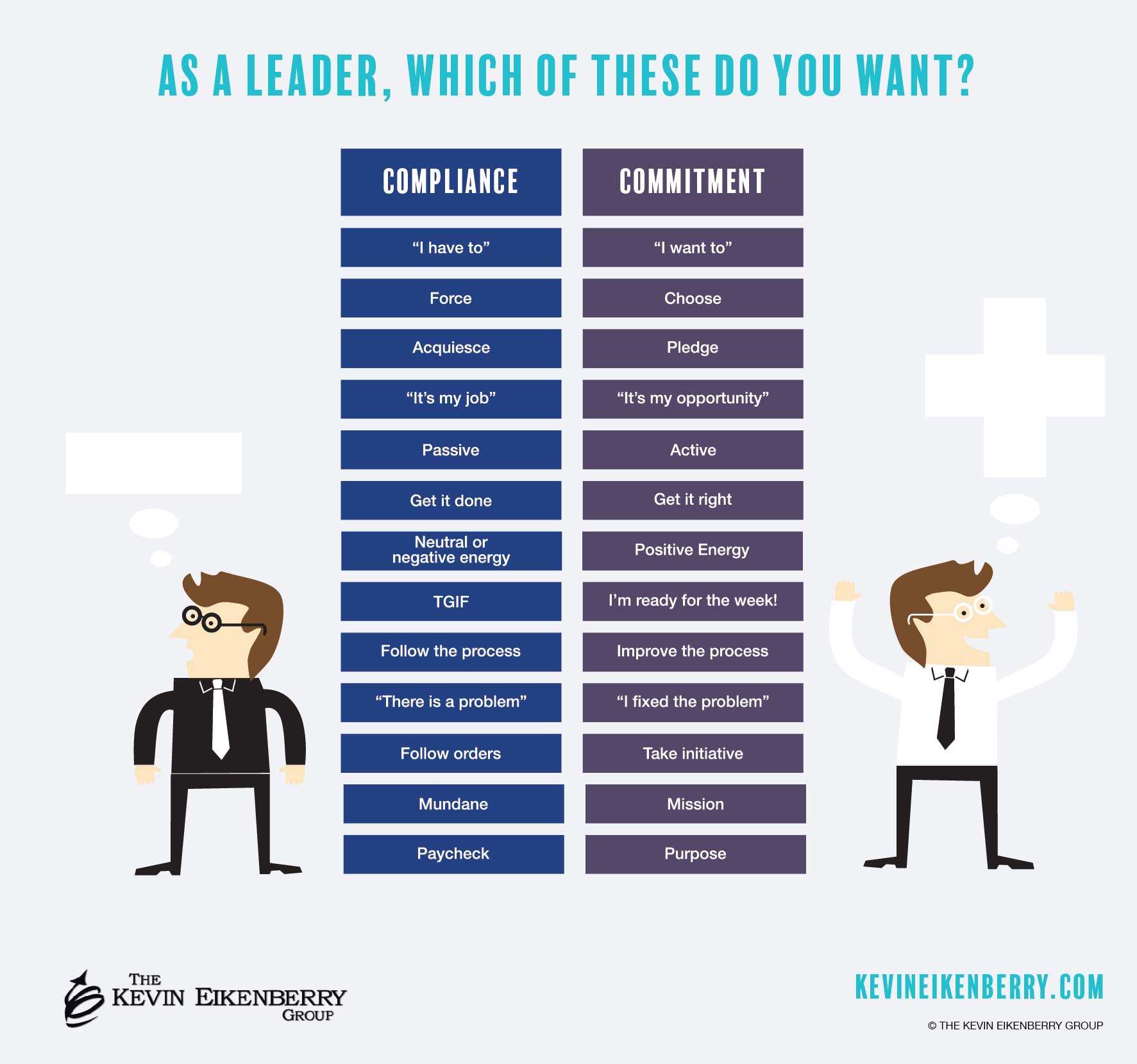
Most of the talk about leadership style is futile without first understanding the answer to this question.
Most leadership development is hollow until those learning are clear on their answer to this question.
And while the answer to this question may seem easy or obvious, the results in the world around us prove that we are getting far more of the former than the latter.
So, do you want compliance or commitment?

What do you want, look for and even expect from your team members: compliance or commitment?
The graphic here describes a variety of differences between these states. When you look at it this way, most any leader would say they want commitment. Results in the real world tell us that even if that is what leaders want, that isn’t always what they are getting.
Wanting something, then, isn’t enough; we need to know is how to we get what we want. Here is a short list of what you need to do if you want the results on the right side of the image. . .
You must believe it is possible. Too many leaders haven’t seen true commitment at work, or haven’t seen it in their current organizational culture, except with some individuals. Do you believe you can create and nurture a team of committed team members?
You must be committed yourself. Like anything else, you must role model the behavior you want to see in others. As just one example, what is your energy, and is that consistent with what you expect from your team?
You must relinquish power. If you want others to be committed, you must give them more control and responsibility, which means you may feel like you have less power. How comfortable are you with that idea?
You must accept more ambiguity. If the goal is compliance, the world is mostly black and white. If you want people to be committed, they may have ideas that stretch the boundaries. Are you willing/able to live with that?
You must trust more. If you want people to be trustworthy with decisions and actions, you must trust them first. Are you ready to do that?
You must work harder. When you have a committed team they will be stretching you, expecting more from you, and you may find yourself running to keep up. Are you ready to work harder to support and inspire your team?
You must be more self-aware. Leading for compliance requires less of you; less skill, less expectation and less awareness of how what you are doing is impacting the team. To lead a committed team requires you to be far more self-aware, are you ready to see yourself in new ways?
You must be a learner. A committed team will be learning and they will need you to be learning too – both to stay with them and to grow your skills to better serve them too. You will need to study, reflect and receive coaching. Are you ready to get more feedback, learn new skills and put it all to work?
This list brings reality to the wish of a committed team. Achieving this valuable objective takes work; starting with you. I hope that this article challenges you to consider the possibility of a highly committed team, and encourages you to make the investment required to make it happen.

Loved this graphic and article!
Great article, Kevin. When we use our position power with our employees, we use our authority, reward, and discipline powerbases. This simply breeds short-term compliance in our workers. On the other hand, when we use our personal power and influence through information, expertise, and goodwill, we build long-term commitment in our people. One should always choose personal power over position power to fully motivate, engage, and energize workers.